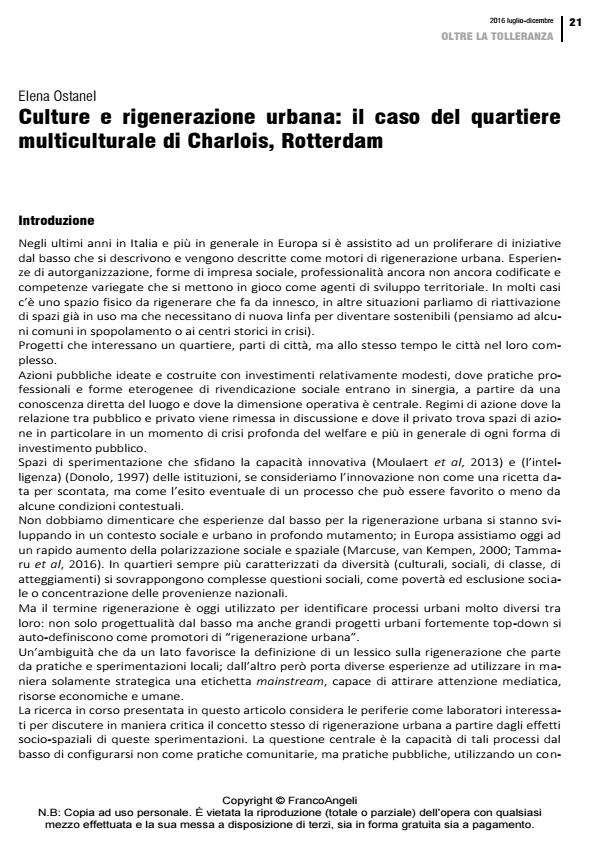Cultures and urban regeneration. the case of the multi-cultural neighbourhood of Charlois, Rotterdam
Journal title CRIOS
Author/s Elena Ostanel
Publishing Year 2016 Issue 2016/12
Language Italian Pages 12 P. 21-32 File size 1082 KB
DOI 10.3280/CRIOS2016-012003
DOI is like a bar code for intellectual property: to have more infomation
click here
Below, you can see the article first page
If you want to buy this article in PDF format, you can do it, following the instructions to buy download credits

FrancoAngeli is member of Publishers International Linking Association, Inc (PILA), a not-for-profit association which run the CrossRef service enabling links to and from online scholarly content.
In Italy and Europe different community based actions describe themselves as catalysts of urban regeneration and territorial development: project and practices realized with small investments where the focus is the direct involvement within the territory and the focus on the action, rather on the project design phase, is central. They are practices that usually interact with the institutions, sometimes generating mutual understating and new formal or informal institutional arrangements, but in other cases producing a de-empowering process by the public actor or support to gentrification processes. Based on this framework, the article analyses the case study of Rotterdam Charlois, the Netherlands.
- Rivitalizzazione di edifici pubblici e condizioni di contesto. Riflessioni a partire dal caso italiano Beatrice Maria Bellè, in TERRITORIO 105/2024 pp.106
DOI: 10.3280/TR2023-105014 - New Metropolitan Perspectives Beatrice Maria Belle’, pp.898 (ISBN:978-3-030-48278-7)
Elena Ostanel, Culture e rigenerazione urbana: il caso del quartiere multiculturale di Charlois, Rotterdam in "CRIOS" 12/2016, pp 21-32, DOI: 10.3280/CRIOS2016-012003